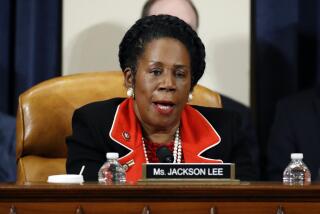Tijuana: Through a Mirror, Darkly
Just about every cliche regarding Tijuana rings true: fault line separating two worlds, the Mexican Wild West, the Third World’s first city of tomorrow--the metaphors are endless. They all point to an undeniable reality and at the same time miss much of its essence; the catchy phrases emphasize a duality and a difference that make Tijuana special but never do justice to the depth and meaning of that difference.
Understandably, sociologists and economists, urbanists and writers are mesmerized by the unique quality of the town. Only in Tijuana (and to a similar extent in Ciudad Juarez) do Third World and First World actually meet, physically, geographically, culturally. The Mediterranean separates Europe from Africa, the Bosporus and the Balkans from Asia. Russia is kept at bay from Western Europe by a continuum of Eastern European nations, none as prosperous as Germany, none as backward as the former Soviet Union. Nowhere do a rich country and a persistently poor one share a land border; never have the quintessential traits of underdevelopment hugged 21st-century affluence as they do where Tijuana and metropolitan San Diego meet, clash and coexist.
This exceptional situation lends itself to myriad interpretations, ranging from the Mexican metropolis’ de facto absorption into the U.S. to its christening as the first U.S. town in Mexico. But perhaps the most accurate depiction of the city’s essence was captured in the counterintuitive film noir classic, “A Touch of Evil,” in which Orson Welles played the American bad guy and Charlton Heston the honest Mexican cop, or in a paraphrase of H.G. Wells’ exclamation on returning from Moscow in the 1920s: “Tijuana is Mexico’s future, and it doesn’t really work.”
If any region south of the Rio Grande fits the metaphor of being “plugged in” to the United States, it is the northwestern border of Mexico. Everything in Baja California Norte moves and breathes with the other side: the maquiladoras all manufacture goods exclusively for export; the restaurants and hotels in the newer districts all cater to the transborder trade; the people waiting along the fence are all hoping to find work del otro lado ); the banks and drug cartels look north, too, as do the businessmen with credit and accounts in dollars, and the consumers, who shop “American” except when the peso crashes and ends no longer meet.
Whatever else this may mean for Mexico and one of its largest cities, it certainly represents a huge improvement in relation to the rest of the nation. Unemployment in Tijuana is dramatically smaller than in the heartland and wages, while still abysmally low, are higher. Money ebbs and flows in countless transactions, and competitiveness in the global economy, however artificial it may sometimes appear, is a respected imperative, not a derided catchword.
But in the same fashion that only a tiny part of Mexico fits in Tijuana today, or ever will, not everyone in the city shares the boomtown prosperity. One million Mexicans (at most) permanently reside in Tijuana; total maquiladora employment there is less than a 150,000. It is easy to forget sometimes, but Mexico is rapidly approaching the 100-million mark and needs to create 1 million new jobs a year just to keep up with population growth. So, no matter how many Hitachi, Samsung and Sony assembly factories spring up around the Otay industrial park, there are simply not enough TV customers to gainfully employ the teeming Mexican masses craving jobs, incomes, a decent life and security for their families. For every Tijuana, there is a Chiapas; for every Juarez, there is a Oaxaca; for every Mexicali, there is a Guerrero. Unfortunately, the list of boom-towns stops there, but not the seas of poverty and inequality in Mexico.
This is the second basic error in projecting Tijuana as a paradigm for Mexico. It is not only that Mexico does not fit in Tijuana; its natives don’t all belong either, at least not to the modern, more fortunate side of the tracks. Tijuana is, in this specific sense, extraordinarily Mexican: The social, ethnic, gender and regional gaps that beset Mexico from north to south are omnipresent in Tijuana, and they have a direct bearing on the violence that has engulfed its psyche and everyday life. Luis Donaldo Colosio was not assassinated in a posh hotel or on the green lawns of the more fancifully landscaped maquiladoras, but in a swarming slum. The assassins who gun down law enforcement officers, drug lords and small-time dealers are young men who, for numerous reasons, do not fit in the idyllic vision of a Mexican Silicon Valley. The hustlers and smugglers who shake down the migrants heading north and the deportees shipped back are as much a part of Tijuana as the Japanese executives whose kidnapping represents the top of the scale of thuggery. Because Tijuana is Mexico, it cannot escape the deep fractures of Mexican society; indeed, they may be worse so close to the promised land.
The locals are right to be proud of their community; it has achieved what virtually no other in Mexico has. And they correctly condemn the exaggerations and scare stories that are a staple of the media, Mexican as well as foreign. The vast majority of Tijuanans are neither murderers nor drug traffickers, and most are quite content to remain on their side of la linea. But like so many other Mexicans “plugged into” the United States, they will have to acknowledge that living in a country as segregated and sundered as Mexico has a price--lower than that paid by those who do not enjoy the benefits of Americanization, but exorbitant nonetheless.
Tijuana is the mirror in which Mexico can see its future at its brightest if it continues along its present road. It is not a pretty sight.
More to Read
Sign up for Essential California
The most important California stories and recommendations in your inbox every morning.
You may occasionally receive promotional content from the Los Angeles Times.






